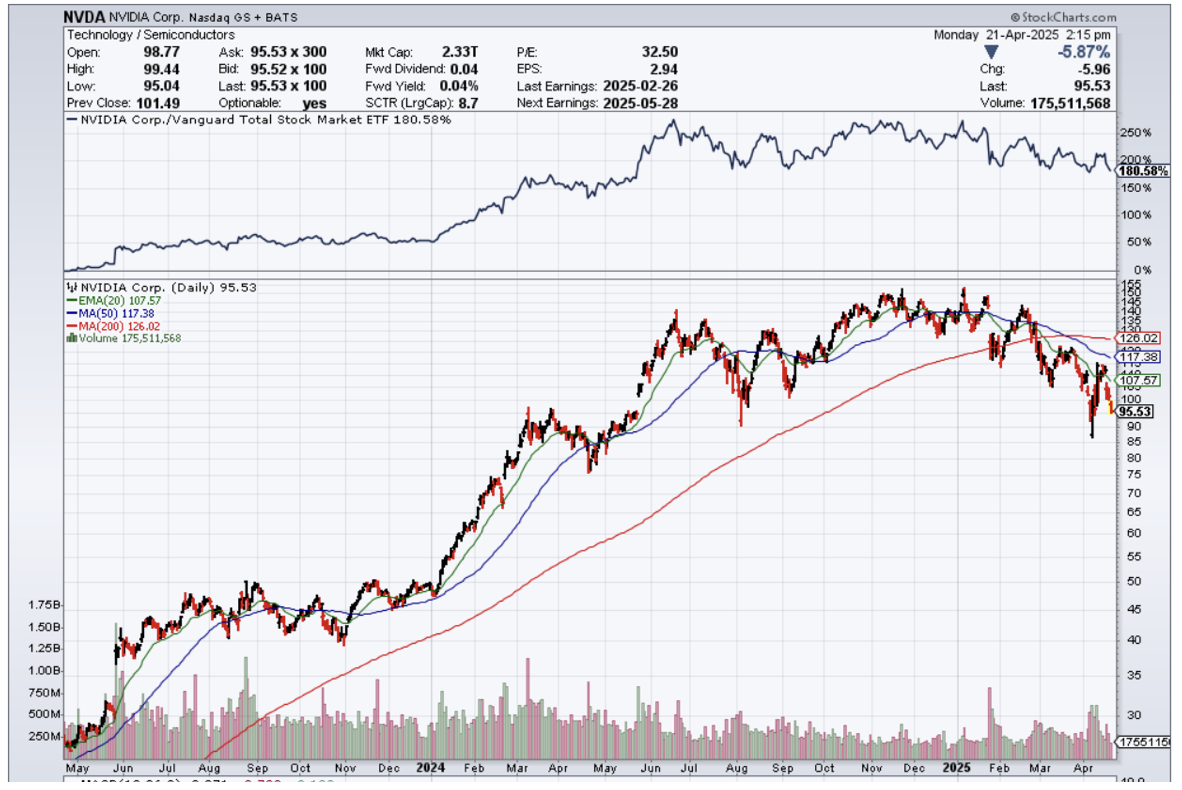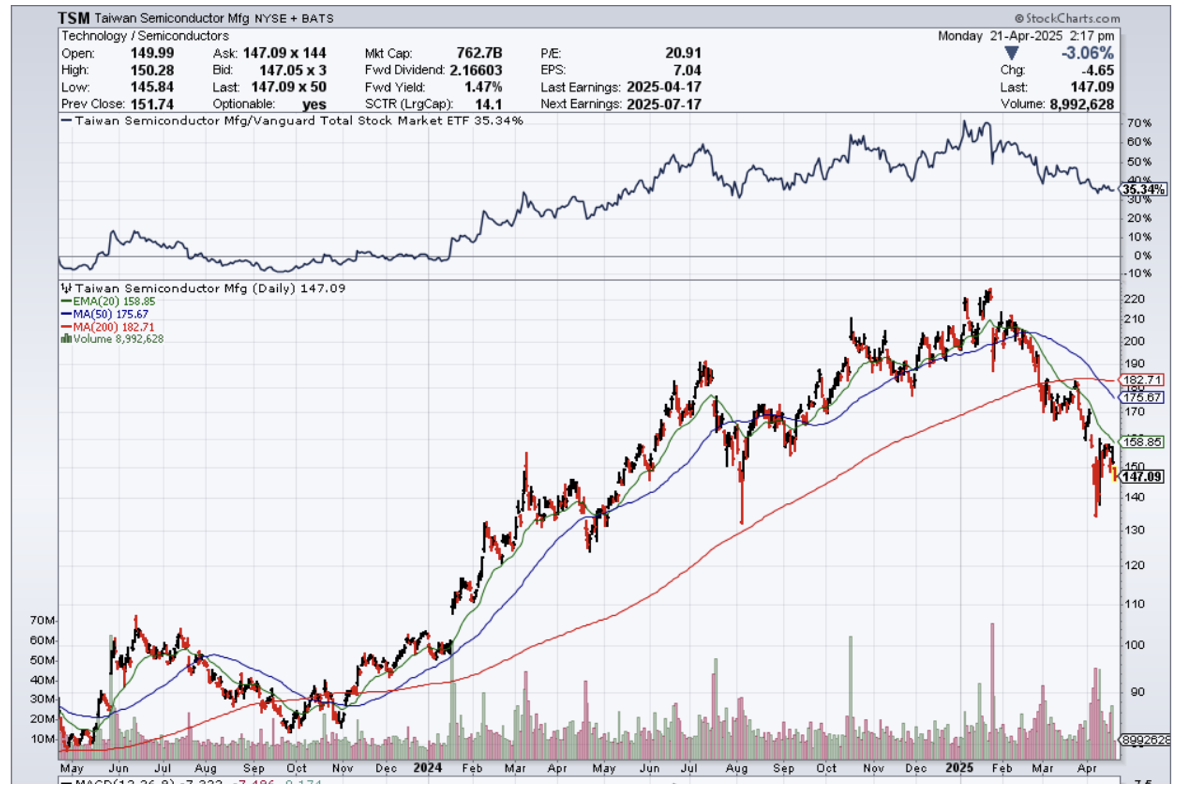Difficulty Of Doing Business For Chip Companies
The U.S. appears to have made a massive blunder in its chip control blocking of China.
The U.S. Commerce Department said last week that Nvidia’s H20 graphics processing units — designed to comply with previous U.S. restrictions — would now require export licenses, as would additional chips from AMD. Nvidia says it has already halted exports of the GPUs, resulting in a quarterly charge of approximately $5.5 billion.
Could this be an example of the government getting in its own way?
Examples of these local AI chipmakers include tech powerhouse Huawei and the partially state-owned and publicly listed Cambricon Technologies, which designs GPUs.
Shares of Cambricon were up over 10% in the past five trading days amid news of the latest Nvidia controls. The stock is up over 400% in the past 12 months.
Can China fill the gap?
Huawei is the clear leader in China’s race to find an Nvidia competitor. The U.S.-blacklisted company has been working on its own improvements to compete with the leading technology.
Huawei remains about a generation behind in chips, but that won’t be the case for long.
Because TSMC’s chipmaking equipment includes U.S. technology, the company has complied with U.S. trade restrictions on Huawei and the shipment of advanced chips to China. That has left Chinese companies increasingly reliant on domestic foundries like Semiconductor Manufacturing International Corporation.
Nevertheless, SMIC is under its own export controls, which prevent it from accessing some of the world’s most advanced chipmaking equipment.
Are export controls working?
Chinese chip makers won’t need to immediately fill this H20 demand thanks to stockpiles and previous export exemptions and loopholes.
The U.S. government’s aggressive policy against the semiconductor industry is backfiring.
It is interesting that the Federal government never takes into consideration that loopholes and workarounds are possible and what the aftereffects are.
Sanctions can usually be subverted by using a third country to move the goods, and that is what we are seeing.
The end result is higher prices for all.
In general, an increase in the price of semiconductor chips would result in anything tech-related going up in price, and that is after a generation of deflation made devices cheap.
This also raises the price of doing business in AI. The GPUs needed for AI data centers will become more costly.
I could envision the future where harnessing AI software might be reserved for the well-off, because it won’t be cheap to use.
Each pressing day, the cost of business goes up as the globalization trends from post-World War 2 are being ripped to shreds by the existing administration.
Deglobalization is painful for the average person, but when you add on a tech sector in dysfunction, it really turns the screws on the investors.
What’s the end result?
In the short-term, semiconductor stocks will cool off because government obstruction means it is way harder to do business, let alone at profitable prices.
This restriction, this tariff, this rule, this forced export control, and the circus keep going with corporate management wishing one day to operate in a stable business environment.
Nothing is stable about the business environment now, forcing investment dollars to the sidelines.
In the short-term, sell any bear market rally in chip stocks.




